Country Report: Switzerland
Home to some of the world’s most important international health institutions and some big pharma players as well, Switzerland lays claim as a healthcare and life sciences powerhouse. Navigating its pharmaceutical market terrain, however, does not come without its challenges.
This sponsored supplement was produced by Focus Reports.
Report Publisher: Diana Viola
Project Directors: Crystelle Coury, Valerie Baia
Contributors: Jannes Peemöller, Alexander Ackerman, Julija Lukaityte
Senior Editor: Louis Haynes
Editor: Patrick Burton
Graphic Design: Miriam Leon
Cover Illustration: © Max Bill. All rights reserved
For exclusive interviews and more info, please log onto www.pharmaboardroom.comor write to contact@focusreports.net
A Kaleidoscope of Excellence
Located deep in the heart of Europe, home to some of the world's most important international health institutions as well as two of its largest pharmaceutical companies in Novartis and Roche, and with a number one ranking globally in terms of ease of doing business and innovation; Switzerland can truly lay claim to be a healthcare and life sciences powerhouse. Despite some of the highest operating costs of any country in the world, an increasing number of pharma companies are choosing to base their European and EMEA headquarters in Switzerland, allowing the landlocked nation of merely eight million to fi rmly establish itself as "Europe's brain."

Though not without its own specifi c challenges – as a non-member of the European Union, its rather quirky regulatory setup can certainly confound some un-savvy operators, while the country's aforementioned pricy-ness, remains distinctly unappealing to others – Switzerland continues to lead the world in innovation and offers decidedly more that fi rst meets the eye. "Our unique market is doubtless small, but holds its weight admirably alongside European giants that are only a train ride across the border," resolutely affi rms Pascal Strupler, director general of the Federal Offi ce of Public Health for the Swiss Confederation.
One striking feature of the country's pharmaceuticals complexion has been the growing proclivity to treat the small mountain nation as a stellar destination for drug manufacturing. Alongside the familiar ongoing investments of homegrown giants, Novartis and Roche, in maintaining a full manufacturing presence, the thundering pace at which major international pharma companies have demonstrated a willingness to invest in new or upgraded fabrication facilities has been deeply impressive. Biogen, for example, last year announced that they would be erecting a brand new biotech plant in Luterbach, in the canton of Solothurn to the tune of some EUR one billion (USD 1.1 billion), while Celgene have been spending big on extending a major hub near Lake Neuchâtel. "The big pharma multinationals are consistently demonstrating a clear preference for Switzerland when it comes down to manufacturing state-of-the-art, latest generation, high-complexity originator products. This is because their key selection criteria are productivity, quality assuredness and the strong brand reputation associated with Swiss-ness, all of which prove more than sufficient to stave off any tendency towards de-industrialization," proclaims Thomas Cueni, former secretary general of Interpharma and current director general of the Geneva-based International Federation of Pharmaceutical Manufacturers & Associations (IFPMA), representing the interests of the research-based biopharmaceutical industry at a global level.
What's more, one gets the sense of a snowball and magnifier effect underway. "There can be absolutely no doubt that Switzerland remains one of the very best places in Europe to be doing business, concedes Gilles Pluntz, chairman of the group operating committee & SVP Europe and Canada at Ferring, "because of the presence of an abundance of pharma industry, services and research players and the fact that all three are so exceptionally well linked and integrated into the local ecosystem. Indeed, whether one considers the burgeoning prowess of its budding pharma service sector, the gutsy creativeness of its mid-cap drug developers, or the synergistic life-sciences orientation of little known cantons like Ticino, this is clearly a market in the ascendency.
WORLD-CLASS SERVICE PROVIDERS
Playing host to the regional headquarters of some 29 multinational pharmaceutical firms and with a manufacturing base exporting pharma related products worth more than 70 billion Swiss Francs (USD 70.93 billion) per annum, Swiss-based pharma developers have much to shout about. However, Switzerland's life sciences industry extends much deeper than that. Indeed, Switzerland's burgeoning cornucopia of world-class pharmaceutical innovators has necessitated a corresponding growth of service providers with similar levels of excellence. Stefan Berg, general manager of Danish pharmaceutical engineering company NNE, owned by global diabetes market leader Novo Nordisk, highlights the importance of building a strong reputation for reliability in the pharmaceutical engineering niche. NNE has been present in Switzerland for over 20 years and Berg explains that "We have long term relationships with our customers and it's all about trust. In our line of business, you can do it right for many years, if you do it wrong once there's a risk of losing the whole partnership."

Pascal Strupler, director general, Federal Office of Public Health
Roland Laudenbacher, GM of the Swiss affiliate of Honeywell Building Solutions, concurs on the crucial significance of a reputation for reliability when building both manufacturing facilities and R&D labs for pharmaceutical companies, as "pharma manufacturers want top quality, proven, reliable systems that will keep the building conditions they need 24 hours a day, seven days a week. For manufacturing facilities especially, that is the ultimate concern, because if those conditions are violated – the air in manufacturing spaces becomes a few degrees too hot or cold for example – it can break the GMP manufacturing environment and they have to shut down production at immense cost. Reliability is the key concern above everything else."
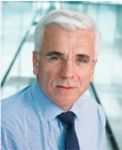
Gilles Pluntz, chairman of the group operating committee & SVP Europe and Canada, Ferring
Not only are pharmaceutical engineers stepping up their game to supply Swiss innovators with the cutting-edge laboratories and plants that they need; highly specialized, top-end of the market contract manufacturing organizations (CMOs) are also emerging to support the multitude of pharmaceuticals companies present in the country. Juerg Burger, managing director of CordenPharma, one such organization, points out that the niche specializations in which many Swiss innovators excel mean that Switzerland has become a key strategic location for his organization; "We are really a dedicated facility for the manufacturing of niche products – for example synthetic phospholipids which later go into liposome formulations, or products needed for novel technologies."
Burger also notes that "more niche indications and segments such as orphan drugs and trends such as personalized medicine ... really drive our business, the latter raising the demand in small quantity needs each year." Rudolf Hanko, CEO of fellow CMO Siegfried, highlights the CMO industry's role as a way for highly innovative companies to offset risk, stating that "the CMO industry ... provides [pharma] companies with an alternative that lets them avoid having to invest in manufacturing assets which might not be used," thereby "providing back-insurance; by taking on multiple clients, we are able to diversify the asset-risk of non-utilization."
"While once the name of the game used to be all about Big Pharma attempting to do everything in-house, most pharma companies are now tending to concentrate on specific stages of drug development and willing to outsource the other functions...Since the development of a new chemical entity or a future generic carries the risk of failure of clinical trials or failure in the launch, production outsourcing to a CMO brings a definite value to the pharma companies," analyzes Gabriel Haering CEO of Cerbios, an elite contract manufacturer of both chemical and biological APIs. According to him, the co-development model characterized by risk-sharing and profit-sharing is becoming more and more popular. "For a small to medium size CMO like us it is possible to consider this model under certain given circumstances such as in the area of future generics or supporting the originator in the "life-cycle-management" phase of his original compound, but we always have to be wary of instances of risk-shifting," he warns. Doing the development free of charge on the basis that the CMO earns royalties on any eventual sales is the dream of some pharma companies, but will probably only makes economic sense to a CMO if they are a new market entrant and desperate to secure some initial business."

Instead of going down that particular pathway, Cerbios has concentrated its energies on providing a visibly differentiated service and having special technologies at its disposal that align well with the premium demands of the kind of top-flight clients to be encountered on the Swiss market. "We have forged a well-earned reputation for being able to safely and efficiently handle High Potency Active Ingredients (HPAIs)," explains Haering. "If you consider the new chemical entities being produced nowadays, we are talking about more and more highly potent substances requiring advanced levels of containment so as to protect the operator from their toxicity in addition to the CGMP procedures in order to avoid any cross-contamination. Our sophisticated containment equipment, which was borrowed from the nuclear science industry, can act as a technological constraint and barrier to entry for potential competitors."

Micromacinazione, another provider of high-end outsourced services, namely jet milling micronization, has been pursuing a fairly similar business logic. "More micronization is being conducted globally than ever before, and though 90 percent of micronization tends to be performed in-house by the pharmaceuticals companies themselves, entities like ours still need to be present to cover the peaks and to take care of difficult-to-handle, high potents... Nowadays every large pharma firm requires a backup in case their production line experiences difficulties. When you're talking about important blockbusters, the norm is for every big pharma firm to have a couple of micronization partners as part of having a sound risk mitigation strategy," points out CEO, Markus Arigoni.

Maleša Ulrico Sidjanski, head Swiss business operations, Institut Biochimique (IBSA)
"Right now, the market is definitely trending towards the use of highly potent and hazardous substances and this has, in turn, translated into a mushrooming in demand for containment capabilities... In the past, we used to micronize a lot of products with a low occupational exposure level (OEL), but the pendulum has been swinging the other way, in recent times, to the point where having containment capabilities covering down to 20 ng/m3 is becoming imperative," he recounts. Micromacinazione has duly been "upgrading its production facilities to include a new banding system and a product segregation regime that comprises both flexible containment and fully closed glove boxes."
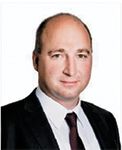
Stefan Berg, general manager, NNE
Despite the expenses accrued for both pharmaceutical engineering companies and contract manufacturers by being based out of Switzerland and the relatively small size of the local market, it nonetheless remains a crucial location for organizations in both segments. Siegfried's Hanko exclaims that Switzerland "is the biggest research and administrative hub for the pharma industry in Europe," making it "essential for us to be here," while NNE's Berg characterizes Switzerland as "one of the [world's] most innovative pharmaceutical hotspots and this is exactly why it is so fundamentally important to be here."
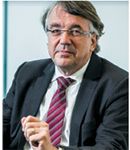
Rudolf Hanko, CEO, Siegfried
THE ESSENCE OF SWISSNESS
Crucial to the business model of the country's drug developers and pharma service providers is the concept of "Swissness," a rather self-explanatory term for the attribute of being Swiss, and in its functionality some might say the term itself is quite Swiss. Swissness remains a staunchly serious matter for the local business community, given the perceived value associated with a product or service being described as Swiss. As Thomas Bohn, executive director of Greater Geneva Bern area (GGBa), Western Switzerland's investment promotion agency succinctly summarizes, "by manufacturing in Switzerland and having the 'made in Switzerland' tag on their products and services, innovative companies can penetrate the markets much more effectively and sell their offering at a higher price," and thus while "the operating costs are higher in Switzerland than in other countries, companies reap adequate value for their level of expenses."

Indeed, even in the pharmaceutical industry where an EMA or FDA seal of approval is ultimately more important than any country designation of origin, being "Swiss" certainly still carries substantial worth. At IBSA, head of Swiss business operations Maleša Ulrico Sidjanski claims that "purely in terms of competitiveness and commercial success, the "made in Switzerland" brand is fundamentally important to the company's communications strategy." "We are positioned in the 'supergenerics' segment, so our success is very much based on our products being known to be superior in terms of pharmaceutical form, delivery pathway, ease of use, and side effect profile, when compared to the original product and its other generic-ized versions," and thus "given Switzerland's well-earned reputation for high quality pharmaceutical manufacturing, producing our therapies in Switzerland makes it very easy to communicate the quality aspect."

Beat Berger, CEO, DCS Pharma
Basel-based API distributor DCS Pharma, meanwhile, has leveraged the sense of quality and trust that people around the world associate with the Swiss in a rather unique manner. While they source their APIs from cost-effective manufacturers in China and India, CEO Beat Berger says that, "from our clients' standpoint, we take on the risk of the supply side and guarantee delivery... [and] they are buying them from a Swiss company." In this regard, Berger says "we definitely benefit from being based in Switzerland because the country is so thoroughly associated with reliability, and premium quality goods and services," which fits well with the company's own reputation, as "it is well known in the market that we always fulfill our agreements, and if we sell a product we know exactly what we are selling and that it meets the specifications it is supposed to."
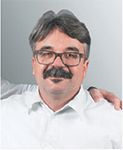
Uwe Schmelzer, director of sales & marketing, DCS Pharma
That's not to suggest that the reputation and brand equity of Swissness doesn't come with its own liabilities however. In terms of additional obligation, Berger points out that the impeccable reputation of the Swiss can "create some pressure for us in the rare cases where things don't work out perfectly as everyone knows the Swiss are always on time to the very second, just like our trains which never run late!" And "of course premium services come at a price, even more so when you're based in Switzerland and having to pay many costs in Swiss francs."
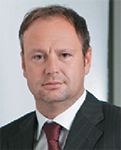
Christian Beltrametti, CEO, Linnea
The base reality is of course that in most cases the Swiss are worth the price. DCS's director of sales Uwe Schmelzer explains that "there is a huge supply of talented experienced pharma professionals across Switzerland," and moreover "from a management culture perspective, we have also been able to develop a corporate culture that is very entrepreneurial, where every employee has the responsibility and independence to take decisions themselves," something that he points out can be difficult even in other European countries that are "somewhat more hierarchical or bureaucratic, which can slow things down." He concludes by reflecting that, "without the right talent pool, it would be frankly impossible run this type of high-performance, high-efficiency organization."
Indeed, in terms of high-performance and high-efficiency organizations, natural extract and phytopharmaceuticals API manufacturer Linnea provides a robust example of the power of Swissness. CEO Christian Beltrametti explains that, "with high labor costs, this means operating with a high level of productivity as well as capacity utilization. Linnea does well in both respects, producing a turnover of CHF 45 (USD 45.1) million with just over 90 people. We also run most of our production lines around the clock – 24 hours a day, seven days a week. This allows Linnea to produce an annual turnover per capita of about CHF 500,000 (USD 501,313), positioning the company in the industry's top percentile." Such performance figures are remarkable and critical for the company's survival, as "while top-quality products can be priced higher than lower quality competitors, we must also strive to keep this differential to a minimum," and as Beltrametti admits "we face tough competition, especially for semi-synthetic APIs, where some qualified Indian manufacturers are also active and meet FDA and EMA quality standards." With competitors having "extremely low labor costs so they can devote large teams and significant resources to guaranteeing the quality of their products; in some cases, they are in a position to utilize over five times more "man hours" than we can at Linnea, or in Switzerland and Europe in general," and thus Linnea's competitive survival is only due to "the extremely high level of productivity combined with the long-term expertise of Linnea personnel."
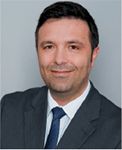
Antonio Pusole, general manager, ALK
Others, such as Metrohm, the renowned designer and manufacturer of high-performance chemical analytical devices, have calculated that, on balance, the rewards to be derived from Swiss quality more than compensate for the higher operating costs that have to be shouldered. "For our customers it really wouldn't be any cheaper or provide any other advantage if Metrohm were to manufacture elsewhere. Additional cost for quality issues and longer innovation cycles more than counterbalance the benefits from lower salary cost for manufacturing in other countries. The proximity of engineering and operations at all of our product centers results in maximum speed and innovation leadership," contemplates the company's CEO, Jodok Reinhardt. "Sure we could pay lower salaries in other countries for manufacturing, but that's not the sort of company we are. We are innovators and are intent on making high-quality products quickly."
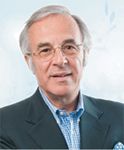
Claude Fischlewitz, managing director, Stallergenes Greer
Similarly, Bridget-Anne Kirwan, CEO of functional services provider (FSP) SOCAR Research, recognizes that "costs are higher in Switzerland than in the US and other EU countries and the strong Swiss Franc certainly hasn't helped," but emphasizes that "one needs to look further than just at deliverables per se – it's important to look at what one gets for the price paid." Taking SOCAR Research as an example, she argues that "in terms of the quality of services delivered... the overall package we offer is a very good value proposition," citing that compared to other FSPs and CROs where "the time from database lock to getting the results out and published... [can] take anything from two to six months; SOCAR Research has a very efficient system in place so that we can almost get the study results out within very short timelines following the patient's last visit thanks to our efficient and highly sophisticated data management process implemented for our trials." In an industry where the value of bringing a product to market a few weeks or months sooner can greatly outweigh incremental increases in cost, making the investment in Swiss quality and investment well worth the cost.
MARKET QUIRKINESS
The Swiss pharma market itself, at USD 5.1 billion for 2015, can appear somewhat strange when compared to other countries. At its most basic level, this stems from the fact that while Switzerland is a small country of just over eight million people in the center of Europe, as ALK's general manager Antonio Pusole puts it, "the country is certainly not Europe in the EU sense." This is of course a basic political reality, but means that in a context whereby virtually every other European nation state from Iceland to Finland to Romania are members of the EMA, that "Swissmedic does not recognize EMA approvals, and is fully independent, meaning that although the regulations are similar you still are compelled to comply with different requirements."
Some of these requirements are quite uniquely Swiss, and create some rather stereotypically Swiss market dynamics. Walter Hölzle, president of the Swiss pharma association vips, explains that "products must be marked in our three official languages, and thus packaged specifically for Switzerland," and that "Switzerland as a quality driven market has very much prioritized patient and physician choice, and as such it is not considered acceptable to substitute an original product with a generic that doesn't exactly match its specifications; this means 20mg tablets for 20mg tablets, and no breakable larger tablets as seen in The Netherlands." These unique requirements, coupled with the fact that "as a small market, we cannot compare our volumes and purchasing power to a country like Germany," and that "we also do not use tendering in our healthcare system," lead to a market with very high generics prices. Hölzle says that, "collectively, these factors contribute toward our higher generics prices, which are 50 percent more expensive than in other European countries."
Beyond rather specific packaging requirements, handling Switzerland's multilingual environment can be somewhat of a challenge for sales organizations as well. Pusole highlights that while the majority of Switzerland is in most ways quite similar to Germany or Austria, saying "a marketing campaign which works well in Germany will probably work largely well in Switzerland," and is thus managed within a German speaking DACH region by many affiliates, it can be challenging to move resources across borders as "such materials must also be adapted and translated into both French and Italian," and sometimes concepts and ideas do not translate well between all three languages. Another particular challenge is that "there are many situations where you are expected to be able to switch easily between the languages; moving between conversations in French, Italian, German, Swiss German and even English at a conference or symposium is really challenging even if you have the language skills in each individual language."
The Swiss mentality also demonstrates some interesting contradictions or doublethink in certain regards; on one hand, quality and patient choice are essential aspects of the Swiss market, while at the same time physicians can be a bit draconian. Taking an example from the market for allergen immunotherapies, Stallergenes Greer managing director Claude Fischlewitz explains that despite the fact that much of the innovation in this market has been in the development of oral therapies, the Swiss "market is largely based on subcutaneous injections, representing roughly 70 percent." He believes that "This is likely due to the fact that doctors here tend to view injections as much more effective than oral ingestion, which requires compliance on the patient's end, even though in terms of therapeutic efficacy there are no differences in the clinical data."

At the same time, as Hölzle mentioned, the Swiss market is quality-driven and prioritizes patient and physician choice, making diversity of portfolio offerings an important competitive factor; Fischlewitz says "Stallergenes can offer doctors subcutaneous immunotherapies, aluminum and aluminum-free products, while also offering our therapies in oral and droplet forms. None of our competitors boast such a diverse offering, with one-stop-shop convenience for doctors looking to fully cater to their patients' needs."
It is also somewhat ironic that despite being a center of gravity for the innovative, allopathic, global life science industry, Switzerland is remarkably open to, and even supportive of, naturopathic medicine, at least in terms of phytopharmaceuticals and herbal-based remedies. Peter Gmünder, CEO of Bioforce, explains that his company's brand A. Vogel was developed originally by a well-known Swiss naturopath in the 1960s, and in more recent years "with modern clinical trials and studies we have been able to demonstrate that our products have a significant medical effect, supporting their registration as pharmaceutical products with regulators such as Swissmedic." Gmünder makes the further point that "the evidence has been strong enough that we have even been able to secure reimbursement for certain indications of some of our products in the base coverage of the official Swiss health insurance bodies."
Georg Boonen, CEO of Max Zeller, expands on this point explaining that "in contrast to other European countries, it is possible for evidence-based phytopharmaceuticals to be fully reimbursed by Swiss health insurance companies and this is unique." He argues of course that "evidence-based phytopharmaceuticals should be considered as a viable and appropriate treatment option in basic care for numerous indications thus ideally complementing synthetic pharmaceuticals," and it seems Swiss physicians have in general accepted this point as "phytopharmaceuticals are anchored in today's pharmaceutical market in Switzerland and are an important tool for general practitioners... and are frequently prescribed by physicians." Moreover, he indicates that, "the trend towards natural treatment alternatives is growing," and already "some products have made it from niche-status to most prescribed products in their indication; our black cohosh product is such an example. In Switzerland, it is the most prescribed product in the whole indication for menopausal complaints."
DIGITAL PROWESS
As the most innovative country in the world, it would logically follow that Switzerland is at the ICT sector's leading edge in terms of the use of innovative data-driven analytics, automated digital solutions, and smart, mobile, 'internet of things'-driven solutions. Indeed, founded in 2015, digitalswitzerland is a government backed cross-industry association with the vision of supporting Switzerland's position as a digital hub, and global center of excellence for developing innovative digital solutions for the global life science, medtech, fintech and fashion industries.
Sophia Genetics is a leading example of Swiss success in this space, as the Lausanne based company is helping to make personalized and precision medicine for tens of thousands of patients around the world. "Sophia Genetics has developed SOPHiA, an artificial intelligence which is connecting hospitals and experts, and analyzing the genomic data they produce," explains CEO Jurgi Camblong. "Last year we helped diagnose 60,000 patients," says Camblong, but "for 2017, we expect to surpass 100,000 by Q1, and by 2020 we expect to hit the one million patients per year mark," and already the company is "proud to have now more than 250 hospitals and over 600 experts who are geneticists and biologists using our platform." At present the SOPHiA AI has access to predominantly next-gen sequencing data, which it can analyze very effectively, but this has thus far been a limiting factor. "To truly continue to enhance the power of SOPHiA, we must start collecting data that is not yet available to us, and adding more information to build a larger collective intelligence," says Camblong, who continues "we do not yet have indication on therapy outcomes, or even other common patient data like their medical history... [and] Being able to feed this information to SOPHiA will really bring us to the era of real time epidemiology." Needless to say, Sophia Genetics is far from the only highly innovative, disruptive tech company based in Switzerland, nor the only in the life science space.
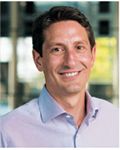
Jurgi Camblong, co-founder & CEO, Sophia Genetics
Some find that as a small and highly innovative country, Switzerland is an ideal place to try out new things, and test new ideas and capabilities in pilot studies. Patrick Brunner, country lead for LEO Pharma, finds that his affiliate's role is largely "about idea-creation and testing out new approaches. Switzerland is a very well structured country with a clearly defined market and that means it is especially suitable as a pilot-study destination." This has meant that his affiliate is "one of the first affiliates to maintain its own blog and a Twitter strategy," and he generally finds that "in terms of internal processes, our size makes us suitable for trying out new developments." As such, he believes "it is absolutely no coincidence that we were selected as one of only seven affiliates worldwide to pioneer Kleresca®, LEO Pharma's first medical device and a treatment for acne deploying innovative biophotonics technology."
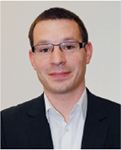
Patrick Brunner, country lead, LEO Pharma
Another actor that is looking to harness the digital dimension to enhance patient quality of life is Ferring, a leader in treatments for the therapeutic category of inflammatory bowel disease. "When you listen to patients suffering from conditions such as ulcerative colitis, you realize that they are often in a miserable situation as, although they keep taking their medicine, they constantly worry about when the next crisis may happen.... We believe we can add value to our drugs by providing devices which will measure the level of gut inflammation in real time thus giving warning signs...Mining and analyzing big data can also be leveraged to track and determine patterns in the day to day life of patients which are associated with their inflammatory crisis," explains Ferring's Gilles Pluntz. "I firmly believe Europe and affiliates like Switzerland are well positioned to be the global driver behind these sorts of developments, and as a company this is also exactly where we want to be!" he affirms.
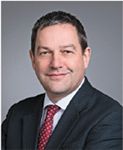
Roland Goette, president Europe, BD
Roland Goette, president of BD Europe, a Medtech leader, fully agrees that Switzerland is emblematic of the sort of sophisticated market where entirely new models of healthcare can be devised by leveraging the power of digital disruption. "One of the largest challenges for the healthcare systems across Europe today is to reduce the length of patients' stay in hospitals and we will start seeing more smart technology connecting devices placed at the home of the patient with the physician enabling remote care," he explains. "As a company, we witness a great need for a more sophisticated information exchange with the hospital and within the hospital... there are already plenty of instruments and devices creating a colossal amount of data, yet few hospitals can arrange and process this data so BD is investing heavily in developing solutions for inter-device information exchange and consolidation which will enable hospitals to utilize data mining capabilities, thus allowing them to become more effective," he confirms.
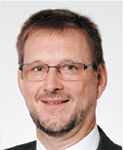
Urs Suter, CEO (2000 to 2016), Siemens Healthineers
Contrary to Switzerland's robust innovative output in the ICT space, and usefulness as a testbed for international companies, this innovative spirit doesn't always necessarily translate into Switzerland being an early adopter of innovative technologies however. Sandrine Deprost-Catelin, general manager for ResMed, says she believes "that Switzerland, in this context, represents two sides of the coin." The first side is that the Swiss are rather cautious, and thus "everything takes a bit longer to implement in Switzerland." Deprost-Catelin cites her own experience in telemedicine which "has not yet fully arrived in Switzerland despite all of the benefits it has to offer; there is no reimbursement and physicians, home care providers and nurses are not familiar with this technology and want to be sure of its utility (pilot studies are currently running with major hospitals and customers)." On the other hand, "once it is implemented it will be done correctly with utmost accuracy and patient compliance to the extent that Switzerland can and will be a role-model to other countries." Deprost-Catelin emphasizes that telemedicine will not be used only due to economic rationale, "but rather for the rationale of providing high quality medical solutions for its patient."
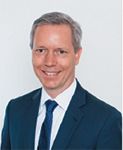
Martin Rohrbach, partner & life sciences leader, KPMG
In terms of utilizing domestic healthcare data, Switzerland actually lags significantly behind other countries like Sweden and the UK, in large part due to the private and cantonal fragmented nature of the healthcare system. As a major provider of automated hospital equipment, former Siemens Healthineers CEO Urs Suter (who stepped down in December 2016 after 16 years as CEO) admits that Siemens' "equipment and our systems produce a significant amount of data of which most is not used." He argues that "this is due to the tight regulations protecting the data as this data remains private," and on a more general note contends that while "there are many discussions surrounding trends such as big data, or personalized medicine for instance, nonetheless there is still a lot of progress and work to be done until we can transform these trends into reality." Moreover, Switzerland is not necessarily in the greatest position to lead such trends as "in terms of information volume, it is clear that Switzerland is limited by the size of its population," but regardless Switzerland "has the advantage of having high accuracy and quality data, and therefore I am confident that this is where we can contribute." With a warning tone, Suter notes that Siemens is "the leading medical devices company in Switzerland," and as "Switzerland has a splendid and exciting domestic life science industry... and for the benefit of the local industry we must work together collaboratively to remain at the leading edge of the life sciences sector."
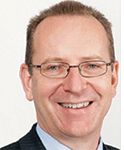
Juerg Zuercher, EMEIA biotech leader & partner, EY
SWISS BIOTECH'S FUNDING QUANDARY
Another quirky feature of the Swiss ecosystem is the manner in which life sciences entrepreneurs attain the material resources to bring their inventions to market. "What I would highlight as the main differentiator between the Swiss startup environment and that encountered in the US is actually the funding landscape. Access to capital is critical for innovative biotech startups, and the Swiss financing context remains highly fragmented," observes KPMG's head of life sciences for Switzerland, Martin Rohrbach. "We possess numerous venture capitalists and private equity players, and the government tends to chip in too, but it is all fairly disorganized and there can be an intense level of competition for initial investment." He adds that, by comparison, the US is blessed with "very well-established and extensive funding network across the biotech community, so that while there is still a fair amount of competition to secure backers, there are nevertheless plenty more potential sources of capital to pursue."
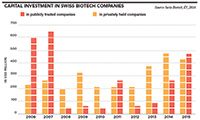
Nic Alexakis, CEO of the Swiss Biotech Association, agrees that "there remains noticeable gaps in the funding cycle for start-ups" and that "companies can find it challenging to set the ball rolling since Switzerland does not enjoy the same easy-going style of VC culture and therefore the pathway to securing investment can be long and laborious." Ordinarily, in Switzerland, "companies must first find a private lead investor, and then set about identifying and securing a handful of additional co-investors – either individuals or companies – to get them over the finish line to an IPO," he recounts.
That said, in comparison to the rest of Europe, the Swiss statistics certainly do look admirable. "Right now, there are some 400 biotech companies currently operating in Switzerland at various stages of development, and within only the last couple of years, the country has witnessed a definite proliferation of startups...Even the financing environment demonstrates some signs of improvement, with well over CHF 400 (USD 415) million invested in 2015 alone," he confides.

Even once companies reach the IPO stage, however, startups are faced with the stark disadvantage that "Europe lacks a large, dominant stock exchange for biotech equity financing and this has an impact on the biotech community right across the continent," according to Juerg Zuercher, EY's biotech leader for the EMEIA region. Relative to the US with its NASDAQ and NYSE as the two core exchanges, "the situation in Europe is considerably more fragmented, with biotech financing scattered across a wide array of locations – from the Scandinavian stock exchange, to the LSE and AIM in London, to the various affiliates of Euronext and not least the Swiss Stock Exchange (SIX)." This makes it tremendously difficult for analysts to follow the biotech sector, as they have to keep track of what is happening on each individual exchange. "A biotech company's decision regarding where and how to obtain financing can actually become pretty complicated: very rarely do we see IPOs in Europe generating the heavyweight proceeds frequently witnessed on the NASDAQ or NYSE," explains Zuercher.
Moreover tribalism and silos tend to be common features of the European biotech-financing panorama. "Generally, when electing to remain within Europe, French companies tend to head towards the Euronext in Paris, German companies to Frankfurt and so on." In the long run, this diversity of options may pose a potential risk for the Swiss life science ecosystem as a whole, with several high-profile Swiss biotechs, such as CRISPR Therapeutics and AC Immune, already making the headlines for opting to go public on the NASDAQ in preference to the SIX.
"Ultimately capital is mobile, and even if excellent scientific and innovation activities are being carried out in Switzerland, innovators will always have alternative options on hand to raise capital elsewhere," warns Zuercher. For the Swiss financing ecosystem this could become problematic if the SIX fails to maintain its appeal. "A clearly identifiable gravitation towards US-based financing does pose a long-term existential challenge: if more and more Swiss startups end up with predominantly American investors, some of them could well be pressured into eventually relocating to the US, which would obviously serve to weaken the Swiss innovative ecosystem," he cautions.
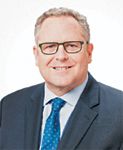
Ronald Scott, CEO, Basilea
Nor is the trans-Atlantic funding discussion limited just to private sector affairs. Basilea's CEO, Ronald Scott, explains that his company "was established as a spin-off from Roche in the year 2000 and started out with the full research capabilities of a pharmaceutical company in the area of antibiotics and antifungals... [alongside] some of Roche's pre-clinical assets." This niche proved to be quite challenging, as "many of the big drug producers have been pulling away from R&D in the area of antibiotics," as they set about restructuring and consolidating their business models. "Luckily government agencies have, to some extent, stepped into the breach where large pharma has moved out," he perceives. Thus, today, Basilea works "in partnership with the US government, which is paying for the majority of the late-stage development costs to bring its antibiotics to US patients, after reaching an agreement in 2016 with the Biomedical Advanced Research and Development Authority (BARDA) to develop the product for the US market as well."
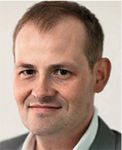
Christof Klöpper, CEO, Basel Area Swiss
"Our hope is that one day Basel will be more like Boston in terms of the ease of access to private capital for start-ups in the very early stages of inception... We would like to see Swiss entrepreneurs being willing to take risks and go beyond their comfort zones and for the financiers to be willing the back them and propel the many bright ideas that are being cultivated here into commercialization," affirms Christof Klöpper, CEO of the investment promotion agency Basel Area Swiss. "What we need are more role models... Of course, Actelion is a splendid example of a local start-up that developed into one of the major biopharma companies of the world and we already witnessed multiple smaller success stories such as Basilea... All of this helps to open the Swiss eye to the endless opportunities out there and to the virtues of being bold. I am confident that this is only a matter of time before we see much greater progress on this front," he enthuses.
MID-CAPS AND MINNOWS: AT THE VANGUARD OF CREATIVITY
In view of the manifold hurdles encountered when attempting to raise capital, Switzerland's medium capitalized entities and SMEs have grown adept at punching well above their weight. After the giants, Roche and Novartis, some of the larger companies in the Swiss pharma sector like Ferring and IBSA are privately held, and some have developed rather specialized strategies for driving impactful R&D with limited financial firepower.
Both Ferring and IBSA specialize in improving the efficacy and value of products by optimizing delivery forms, and while this sounds a lot like "supergenerics" development, the results often go beyond what would be expected from "supergenerics" players outside of Switzerland. Gilles Pluntz, Ferring's SVP for Europe-Canada and chairman of the group operating committee, illustrates their strategy with MINIRIN, a peptide which normally needs to be injected, as peptides would usually get destroyed in the stomach. "As injections are typically not patient-friendly, we developed a nasal spray. Then we acknowledged that for children taking a nasal spray every night is not the optimal solution. Therefore, we went back at it again and succeeded in developing a tablet and later a fast dissolving melt formulation which proved to be absolutely the right solution for children," he proudly recalls. "Given our mid-size, our R&D has to be carefully focused. We spend considerable money on new chemical entity R&D but in comparison to Big Pharma players, this is not a lot, which makes excellent life-cycle-management a necessity for our business model."
In IBSA's case, taking the example of their new Tirosint-Sol product, head of Swiss business operations Maleša Ulrico Sidjanski explains how clinical trials have demonstrated that this formulation breaks new ground in that "unlike other forms of levothyroxine, Tirosint-Sol isn't affected by being taken with food and coffee to the same extent" so is considerably more patient-centric and less disruptive to patients' lifestyles. "We are generating some early but not yet conclusive evidence that Tirosint-Sol may still be effective even when taken alongside proton pump inhibitors," he reveals.
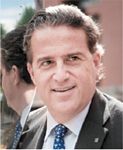
Riccardo Braglia, group vice chairman & CEO, Helsinn
Privately-held Helsinn takes a slightly different tack, seeking to leverage their very specific expertise in late-stage clinical development and registration of assets for cancer supportive care. Group CEO and vice chairman Riccardo Braglia explains that their strategy since the Group was founded 40 years ago has been "to work via in-licensing of innovation... we license products which have a proof of concept, having completed phase IIa for example, and develop them through phase IIb and phase III, and then handle all of the work required for manufacturing and regulatory approval... Once approved, we license out the product to our partners around the world for commercialization, with the exception of the USA where we have our own sales organization."

According to Bragglia, Helsinn has "even had situations where we have developed a product and then handed back rights to the originator after leveraging our expertise in development of cancer supportive care products." However, as recently as 2016 they have "decided that, based on our experience in cancer supportive care, we can now expand our vision to include the development of therapeutics – drugs to treat the cancer itself. As our first step in this direction, we have in-licensed full rights to Pracinostat, a phase III ready acute myeloid leukemia treatment, from San Diego based MEI Pharma." At the same time as carrying out this very focused strategy towards R&D, as Helsinn is "looking to get involved in earlier stage innovation," the Group has taken a rather incongruous step and "incorporated a [USD 50 million] corporate venture fund, Helsinn Investment Fund, based in Luxembourg."
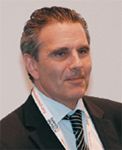
Nic Alexakis, CEO, Swiss Biotech Association
The less capitalized a venture is, of course, the more its management needs to be creative to ensure the biggest bang for every buck expended. Thomas Tóth von Kiskér, CEO of gastroenterology specialist Tillotts Pharma, argues that, "Pharma and life sciences SMEs are increasingly facing an external context which features significant barriers for smaller players, and where companies without a certain minimum size and financing capacity may find it evermore difficult to compete." He notes that, "Companies can fill their pipeline with new products, either by in-licensing/M&A, or developing them internally." When it comes to product development, the average cost of developing a new drug on their own is now far beyond the means of most private SMEs, while the valuations for licensing and product/asset acquisition opportunities have "escalated alongside M&A transactions to dizzying levels, with valuations that don't necessarily reflect reality," and as such "it has become extremely difficult – especially for smaller pharma companies - to find opportunities to license or acquire products or companies for a reasonable price."
The solution, he says, is collaboration and strategic partnerships: "by collaborating with each other, SMEs can cover the whole world or large regions, and either afford the high price-tags to acquire suitable products or jointly develop them. Doing so, they can share risks, costs and profit from each other's specific expertise, be it in marketing, regulatory or other fields."
CLUSTER OF CLUSTERS
"Switzerland is most known in the pharmaceutical industry for the giant drug multinationals based in and around the Basel area," admits Piero Poli, president and CEO of Rivopharm. Indeed, with Basel spoken of in the same breath as Boston as one of the de-facto pharma capitals of the world, the names of Zurich and Geneva, let alone Lugano or Bellinzona do not have the same ring. Yet, for anyone familiar with Switzerland's famously efficient and effective train network, which interconnects both urban and rural areas, the idea that only known centers like Basel have framework conditions conducive to success for life sciences companies is laughable. As Helsinn's group vice chairman and CEO Riccardo Braglia aptly observes, "To be sitting anywhere in Switzerland and to be part of the Swiss life science industry and all the networking that this entails is a tremendous asset... our country is renowned for its thought-leadership on pharmaceutical innovation and for its immense scientific output in terms of patent filings, so being able to tap into such a vibe definitely confers great advantage."
That said, to cast Switzerland as a homogenous life-science utopia is also patently false, For the country comprises a collection of 26 beautiful but distinctive cantons; each offering a different mix of attributes spanning taxes, economic conditions, location, quality of life and accessibility to talent. Indeed, compared to larger countries, Switzerland remains remarkably diverse for a nation of just over eight million people. "We have four official languages... we have multiple centers of excellence with different strengths within a relatively small geography, and of course we have fantastic infrastructure linking everyone very effectively," explains Nic Alexakis, CEO of the Swiss Biotech Association. Illustrating these differences, Alexakis gives the examples that "in the German speaking cantons, particularly around universities, there is a bit more of a sense of possessiveness of research than in French and Italian speaking Romandie, where you see a more open, collaborative and relationship-driven environment," yet unsurprisingly "many feel that the German cantons are more direct and transparent."
"It is fundamental to appreciate that Switzerland is very diverse culturally and there are many different personality types behind the languages spoken. It would be a mistake to treat the people of Geneva as French because their mindset is quite different. Likewise, to assume that those from Zurich are Germanic in their personality can be misleading. Each of the 26 cantons and communities has to be treated on its own terms. Unlike other countries on the continent like France, which has a very strong preference for centralization and statism, Switzerland is notable for being highly federalized, agrees Frederic Bengold, Servier's general manager.
Alexakis cautions though that, "this diversity, which can also be seen as fragmentation, can also become a drawback." One issue is that "economic development and public investment in research and innovation is largely controlled at the cantonal level rather than at a national level, and as such rather than cooperating they compete," he laments. "The difficulties that the Swiss biotech and wider life sciences communities have encountered when attempting to band together for economic promotion initiatives is a case in point, as budgets tend to get channeled towards cantonal or regional focused organization," he recalls.
Potential investors thus find themselves confronted with a complex array of investment promotion and support entities, ranging from the federally funded Switzerland Global Enterprise, to regional agencies like the Greater Zurich Area and Greater Geneva Bern area organizations, to individual cantonal economic development teams – before even considering the often overlapping sector focused associations, and innovation and startup focused entities like Swissnex and Switzerland Innovation. As such, once a potential investor has decided to invest in Switzerland there can be a bit more to site selection than might be seen in other countries. Yet by and large, while there may be 26 separate cantons and a myriad of different potential locations, they can generally be broken down into a few groupings. The first key question is usually German or French, and whether it makes more sense to be close to the Geneva or Zurich international airport, although Italian-speaking Ticino, which has a well-developed ecosystem of privately owned life science SMEs, has begun to make a concerted effort to attract its first major international life science investor.
DECISION POINTS
American oncology biotech Tesaro and Japanese ophthalmology specialist Santen are two of the most recent companies to have had to make the decision of where to set up shop in Switzerland. For Tesaro, SVP and general manager international Orlando Oliveira explains that "at the beginning we considered locations in the UK, the Netherlands and Switzerland as the three broad options," and his team "concluded that Switzerland offered the best package to us overall given its central location, fantastic infrastructure, business-friendly environment, easy collaboration with the local authorities, and the massive pool of talent for the pharma and biotech sector that is frankly just incredible." Once Switzerland had been decided upon, Tesaro "looked at the Zurich area, Basel, and Zug predominantly," and in the end selected Zug. Without mentioning taxes or financial incentives, Oliveira explains the attractiveness of Zug, saying that "with companies like Novartis, Johnson & Johnson, Roche, Amgen, Shire, and Biogen with significant presence in Zug the pool of talent is highly attractive," and the town "has great connectivity to Zürich airport, it's incredibly easy to get Swiss and foreign talent to locate here due to the quality of life, and Zug is also becoming more and more of a hub for small- and mid-sized biotech companies which gives it a very specific and special feel."
For Shigeo Taniuchi, head of the EMEA region at Santen, the decision process was a bit different. "Given that we were setting up a regional headquarters, this needed to be a long-term strategic decision rather than merely a matter of selecting the destination where we pay the least taxes... From a managerial point of view it was essential to have a geographically and culturally central location and the key constellation Switzerland has to offer is the ability to access and manage the diversity and complexity of the different markets... Swiss professionals carry the benefit that they are already mastering the art of managing the cultural diversity," he explains.
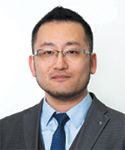
Shigeo Taniuchi, head of EMEA, Santen
Next came the question of identifying the best canton and city. In the beginning, Santen "assessed Basel, as it does have many local champions, a good location and good talent," however ultimately they opted for Geneva. "The attractiveness of Geneva is simply that it extrapolates benefits and expertise beyond the healthcare and life science industry, thus creating a healthy balance of talent," says Taniuchi, which was considered important for the company because "we realized we needed talent in different functions, supply chain management for instance, and Geneva offered top caliber expertise across a broad variety of fields. Moreover, it enjoys excellent public infrastructure and a stellar level of cultural and social life which eases the process of attracting talent from the outside."

Orlando Oliviera, SVP & GM, TESARO
The western Switzerland life science cluster around Geneva and Lausanne – often referred as the "Health Valley of Switzerland" – has had a more volatile growth trajectory than the Basel hub. Benoit Dubuis, president of the BioAlps cluster organization and chairman of Geneva's new Campus Biotech, recounts that "in biotechnology, Geneva has been a source of several fantastic success stories already. Serono, which was later acquired by Merck, came to Geneva in the 1970s and continued its growth under Fabio and then Ernesto Bertarelli; by the time of its sale in 2006, it was the third largest biotech company in the world. Biogen was also founded in Geneva before moving on – the "gen" in Biogen initially stood for Geneva rather than anything to do with genetics or genome." However, when Merck acquired Serono in 2006, the massive Serono campus in the Geneva area was shut down in 2012, and the impact on the Geneva cluster was substantial.
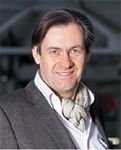
Benoit Dubuis, president, BioAlps
Moreover, over the last five years, western Switzerland has lost multiple multinational regional headquarters; Shire relocated their European HQ from Eysins to Zug in 2013, Alexion relocated their EMEA HQ from Lausanne to Zurich in 2015. Thus, while there is "a strong heritage and tradition of biotech in the region, and a wealth of experience and talent" according to Dubuis, and indeed the BioAlps and Health Valley organization have a significant membership of young and highly innovative companies, from a strictly business-oriented perspective, the western Switzerland life science cluster ranks as less mature than those around Zurich and Basel.
TICINO: MILAN'S SWISS SUBURB?
Don't let the Sprezzatura (studied carelessness) fool you! Tucked away on the south side of the Alps, the majority Italian-speaking canton Ticino can feel almost like a suburb of Milan at times. Yet, anyone who visits either the canton's economic center Lugano or capital Bellinzona, will quickly pick up on the fact that despite being separated from the rest of the country by snow-packed and ski-chalet sprinkled mountains, Ticino is very much a part of Switzerland. "From a business owner or manager's perspective, Ticino offers all of the advantages of any canton in Switzerland in terms of an open business environment," attests Alpex Pharma's managing director Shahbaz Ardalan, who points out "You don't lose time due to excessive bureaucracy or circular discussions with authorities, and instead can really focus on your clients, products, and growing your business without significant political distractions," as might be the case outside of Switzerland's borders.
True to Swiss form, the life sciences are of course an important part of the Ticinese economy, with Stefano Rizzi, director of the economic division at the canton's Department of Economy and Finance, explaining that, "the life sciences sector constitutes a bright spot within the context of the cantonal economy. With approximately 240 companies employing nearly 4,200 FTE employees, the life sciences industry generates 21 percent of all Ticino exports, about CHF 1.1 billion (USD 1.11 billion)." Rivopharm's president and CEO Piero Poli clarifies that "Ticino is really a perfect example of the excellence of Swiss SMEs in the pharma industry, as this canton with a population of only 330,000 has a pharmaceutical industry which collectively produces over CHF 2.3 billion (USD 2.3 billion) worth of pharmaceuticals and employs well over 2,000 people."

Indeed, barring Zambon, with no true multinational pharma players with a significant presence in Ticino, the Ticinese pharma industry is almost exclusively made up of privately owned SMEs. IBSA is the largest pharma company based in Ticino, and head of Swiss business operations Sidjanski affirms that, "as the largest privately owned pharmaceutical company in Switzerland, the company remains very committed to the community and families which exist around the company here in Ticino." This commitment to the region is a key feature of the company's strategy according to Sidjanski, who says "keeping our development, production and distribution activities concentrated "under one roof" in Ticino and the nearby areas of Italy along the border... we can ensure that we are able to deliver overall quality "from the grape to the bottle" so to speak."
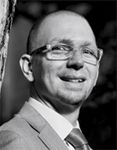
Stefano Rizzi, director of the economic division, Ticino Department of Economy & Finance
Despite the limited size of the canton's population and corresponding pharmaceutical community, with the 27 members of the Farma Industria Ticino (FIT) association generating combined revenues of a single blockbuster drug, these members form a diversified miniature pharma ecosystem with true cluster dynamics, synergies, and innovation infrastructure. Giorgio Calderari, chairman of FIT boasts that "the great strength of this small territory is that if you view the pharma industry as a sort of "virtual company", you will essentially see a CHF two billion (USD two billion) entity with over 2,000 employees, and a huge range of capabilities and specializations." He further explains that "almost all of our members offer some third-party contract capabilities in addition to their own business, and as such you can view FIT as a big CDMO with a great range of capabilities," with facilities which are for the most part "approved by regulators worldwide, including the FDA, EMA and Japanese PMDA." As such, Calderari proclaims "whatever your need, someone in Ticino will be able to help!"
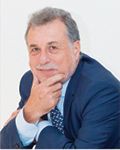
Giorgio Calderari, chairman, Farma Industria Ticino (FIT)
Moreover, the canton also boasts a fully-fledged life sciences R&D ecosystem. Rizzi elaborates that "a total of 75 research institutes and laboratories are active in the canton in different fields and sectors," with "the two main academic centers, the University of Italian Switzerland (USI) and the University of Applied Sciences and Arts of Italian Switzerland (SUPSI), employing over 1,500 collaborators, and carrying out CHF 45 million (USD 45.45 million) of research each year." With internationally known and respected institutions such as "the immunology focused IRB (Institute for Research in Biomedicine) in Bellinzona, the Institute of Oncology Research (IOR) and the Oncology Institute of Southern Switzerland (IOSI), the Cardiocentro Ticino and the Swiss Institute for Regenerative Medicine (SIRM), and for the neurosciences the Neurocentro Ticino," the canton generates quite a lot of impactful medical research for what is ultimately a community of 330,000 people. With this robust academic and research infrastructure in place, the canton has more recently been looking to turn that research into commercial innovation locally, and now has all the support mechanisms in place to foster the development of a start-up ecosystem, with the public-private partnership AGIRE Foundation fostering innovation and entrepreneurship, and the Tecnopolo Ticino techno-park and Lugano MedTech center around Lugano serving as incubators for young and innovative life science companies.
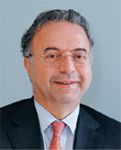
Shahbaz Ardalan, managing director, Alpex Pharma
TICINO: BASTION OF PHARMA SERVICES
Given its rapidly maturing pharmaceutical ecosystem, Ticino offers many advantages for entrepreneurs and SMEs. As Alpex's Ardalan elucidates, "While there are true homegrown Ticinese pharmaceutical companies, Alpex like many other businesses is here for a reason. Ticino has long attracted entrepreneurs from Northern Italy and further afield, and for far more reason than just the high quality of life and beautiful natural surroundings." Of course, from a foreign perspective, Ticino offers all the advantages of being in Switzerland, however, the region also offers distinct advantages over other Swiss hubs of pharmaceutical activity. "Ticino is somewhat lower cost than Northern Switzerland, and while salaries are higher than in Northern Italy, holistically the cost of operating a business is not much higher in Ticino than just across the southern border," explains Ardalan. Moreover, with central Milan less than an hour and a half from Lugano by either car or train, Ardalan argues that, "Ticino is extremely well located geographically... [as] we have easy access to the workforce around Milan, and the skilled graduates coming from the excellent universities in the region. This also means that logistically all three airports around Milan are easily accessible."

Gabriel Haering CEO of Lugano-based Cerbios, a specialist in process development and contract manufacturing of High Potency Active Ingredients (HPAIs), very much concurs. "Situated where we are, we're able to blend Germanic rigor with Italian creativity. Ticino's reputation as a top-notch service provider to the pharmaceutical industry is growing in leaps and bounds. Not only is the canton a good catchment area for attracting in stellar talent from Italy, but the local authorities are also incredibly supportive, to the point where we have received financial backing for investments projects that contribute positively to the local economy and employment," he reveals. "The region has taught itself how to attract companies to relocate to Switzerland: crucially not just by providing tax benefits, but by offering a strong and stable platform that allows the company to grow," agrees Paolo Galfetti, CEO of Applied Pharma Research (APR).

Preferential access to multiple markets is another important consideration given the fact that Ticino straddles the gateway dividing North and South Europe. "Comprising part of Switzerland, we gain seamless access to the Germanic and Northern parts of Europe and yet, at the same time, are able to tap into the historic chemical pedigree of Italy and engage directly with Southern Europe. We have the very strong economic powerhouse of Milan and Northern Italy literally on our doorstep, which affords us ready access to a multitude of pharma and chemical companies... Effectively we sit astride two very different marketplaces and find ourselves easily doing business with both," concludes Markus Arigoni, CEO of contract micronization outfit, Micromacinazione.
Despite this enviable pharma ecosystem, Ticino and Lugano still have a limited profile within the international and even Swiss pharmaceutical communities, however. Rivopharm's Poli argues that "the perception of the Ticino pharma cluster is rather understated because for the most part, the companies here are not marketing-oriented entities," and that "many of these companies operate under an out-licensing business model, and thus are not particularly well known in the wider international pharmaceutical community." Indeed, IBSA and Helsinn, to date, constitute the only two commercially-oriented pharmaceutical innovators based in Ticino, and Helsinn only has commercial operations in the US, with neither yet possessing the real brand firepower to immediately make Ticino known worldwide.
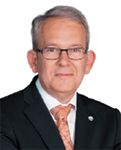
Gabriel Haering, CEO, Cerbios
That said, Ticino's profile and international recognition has been steadily increasing over recent years following a concerted effort by the members of FIT. As Caderari explains, the early 2000s marked a turning point for the Ticino pharma cluster, as "the current generation came to the front, with several sons taking over leadership of their family companies, some others structuring their business in a more industrial way by hiring professional managers, and a few newer entrepreneurs creating and acquiring companies here in Ticino."
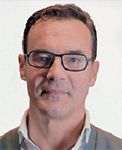
Paolo Galfetti, CEO, APR
This new generation "saw the opportunity for FIT to have a more impactful role," according to Calderari, "and thus aimed to accomplish two things; to work towards building a true pharma cluster and support cluster dynamics and synergies, and to collaborate to jointly promote and brand Ticino within the international pharmaceutical industry." The most important step in this direction "has been organizing the Piazza Ticino at CPhI, starting in Paris in 2014," which has now become an annual event.
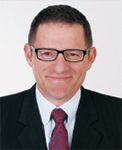
Markus Arigoni, CEO, Micromacinazione
Moreover, Ticino's attractiveness as an investment environment for outside companies has also steadily improved over recent years, with elements of the current R&D and start-up ecosystem being very new. One major development has been the completion of the AlpTransit project and the Gotthard Base Tunnel – the longest and deepest traffic tunnel in the world – which has cut the train ride from Lugano to Zurich down to just over two hours. Rizzi contends this forges "an important psychological link with the greater Zurich area as well as a physical connection," and that "Going forward, we see the potential for Ticino to become almost like a suburb of Zurich from an economic perspective, and our cantonal government wishes to collaborate more closely with the Greater Zurich Area economic organization to forge new economic links and relationships." Another major development has been the introduction of a "new law for economic innovation (LInn) [which] provides support of individual innovative projects and companies in the canton," according to Rizzi. This law "can leverage a CHF 20 million (USD 20.19 million) budget for 2016-2019, which can be directed to accomplish a variety of objectives. Main focuses will be pre-competitive research, network creation initiatives, and incentives to bring product development work to Ticino," and to accomplish these objectives the Ticinese government "will be able to fund private sector R&D projects up to 30 percent (max. CHF one million (USD one million)," on a case-by-case basis.
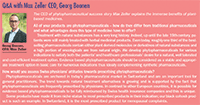
With this new level of connectivity to the rest of Switzerland and new mechanisms in place with which to incentivize R&D investment in the canton, the Ticino pharma community looks forward to attracting new investors to further enhance the development of the Ticino pharma ecosystem. Already, the members of Farma Industria Ticino have committed to investing over USD 650 million over the next three years, with 60 percent of that in R&D. In terms of manufacturing investments, the region's largest pharma player IBSA will be strengthening their footprint further, with Sidjanski highlighting that IBSA "holds all of the necessary planning approvals to begin construction of a new facility next to our headquarters in Pian Scairolo, ... we are calling this new project "Core Pharma" and will be investing CHF 50 million (USD 50 million) to construct a new manufacturing facility." Taking things to the next level however will mean attracting international investors, as Calderari asserts, "what we are still missing is an international business aspect of the cluster, as we have no international pharma companies with a significant presence here. I think it would be great if a mid-sized innovative pharma company were to bring their European headquarters in Ticino, as it would bring a different flavor to our cluster, and help us be a bit more on the map in certain circles." While he admits "Ticino is too small for Big Pharma players," Calderari cites the example of Celgene which "currently has their European headquarters in Boudry, canton Neuchatel, which is a small town a decent train ride away from either Geneva or Zurich," and suggests that a somewhat younger "mid-sized US biotech could find a very good fit in our community."
'SONDERFALL SCHWEIZ'
Unified by a reputation for innovation, excellence, and unrivaled quality, Switzerland, in reality, constitutes a patchwork of diverse communities with widely varying areas of expertise, cultures, and business environments. Physically divided by the lofty peaks of the awe-inspiring Alps, Switzerland's different clusters are united by what divides them, and held together by quirky internal tensions and contradictions. The resulting nation thus runs on a somewhat bizarre and convoluted complex of systems sometimes incomprehensible to outsiders. Yet, as the Swiss are indeed Swiss - immensely capable, incredibly well educated, and inconceivably pragmatic – they make it function fabulously, which is indeed the essence of Swiss exceptionalism, the much-vaunted 'Sonderfall Schweiz'.
